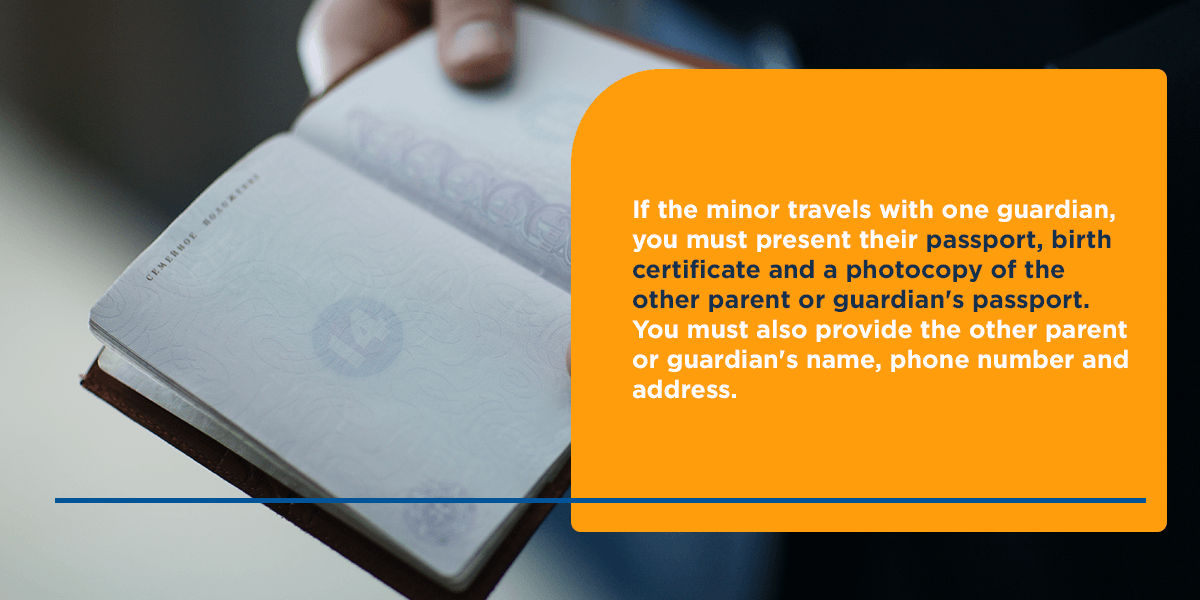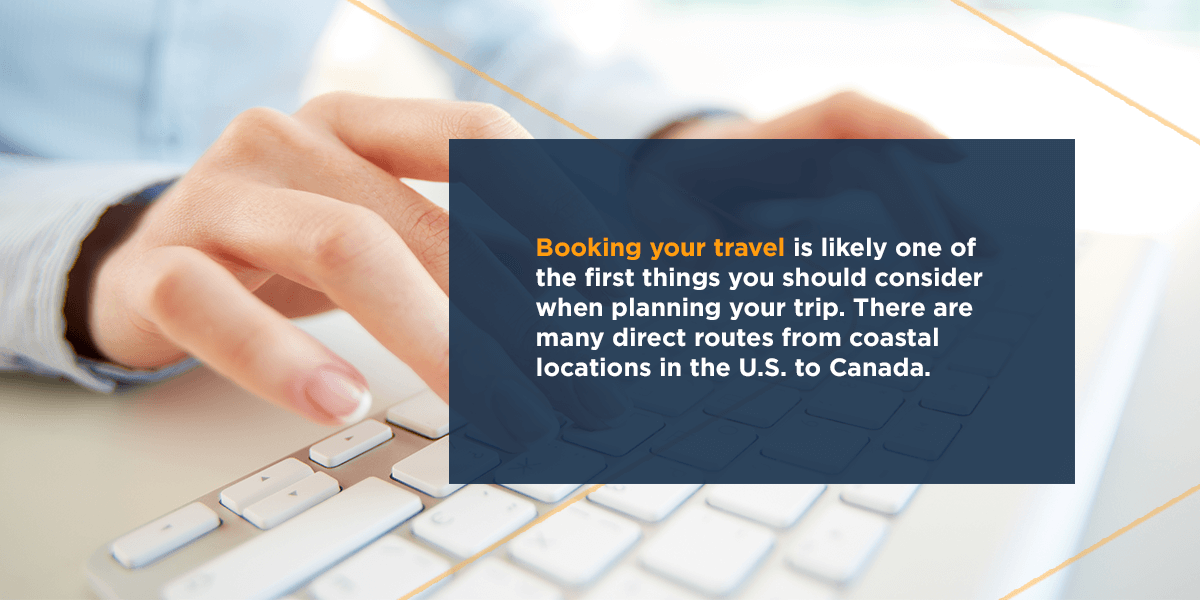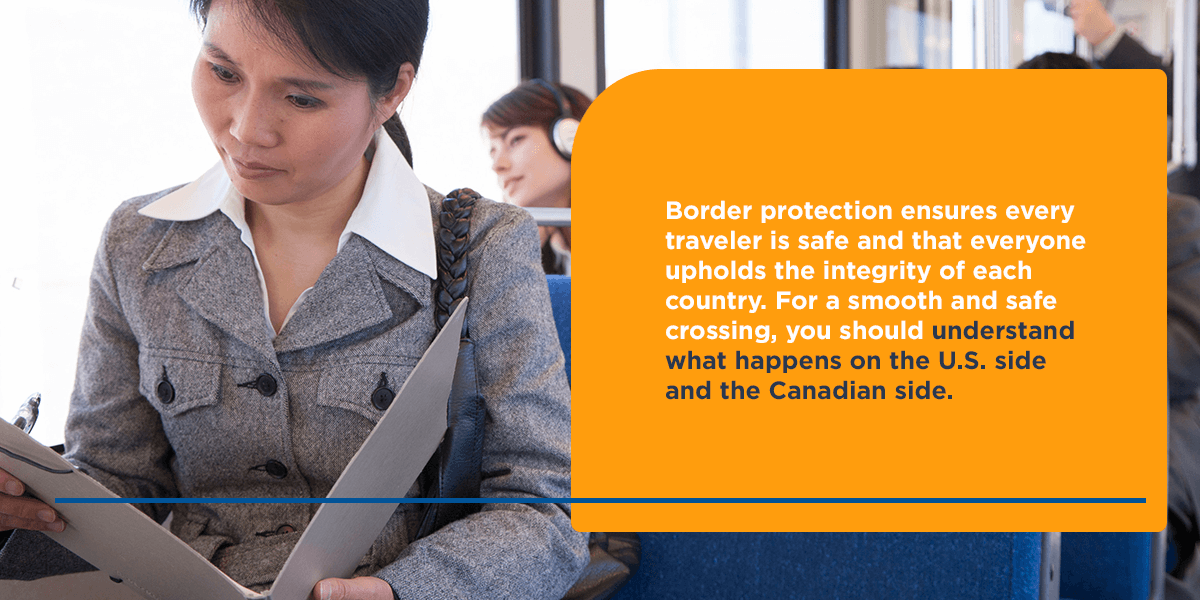Search Local Charter Bus Companies To Compare Quotes
Search by:
- Recent Searches:
Press the down arrow key to interact with the calendar and select a date. Press the question mark key to get the keyboard shortcuts for changing dates.

Tips for Crossing the U.S.-Canada Border by Bus
02/06/2023
Group PlannersTravel Tips
If you’re planning a trip to Canada or the United States, you want to be prepared. Whether you’re celebrating a significant event, meeting up with a friend or trying to see the beautiful sights each country has to offer, there are some important things you should know.
Find the best travel tips from BusRates, including how to gather the correct documents, what to bring and what to expect at the U.S.-Canadian border.
Border Requirements and Guidelines
You should always be aware of the current Canadian border measures and U.S. entry requirements before planning your group trip to the border. In some cases, you’ll need to have the correct travel, COVID-19 testing and vaccination documents to enter the country, along with additional identification documents.
Traveling to the United States
Canadian citizens entering the U.S. must follow strict guidelines. Travelers entering the U.S. must provide proof of vaccination for COVID-19 and be able to show this documentation upon request. This requirement applies to essential and non-essential travelers. However, this does not apply to U.S. citizens, U.S. nationals or lawful permanent residents.
Additionally, you should be aware of the US-VISIT program if you’re looking to work in the U.S. or become a citizen. The US-VISIT Program enables the government to verify the foreign national identities of those applying for visas. Immigration officials use this information to inform admission decisions as part of the entry inspection or visa application process.
Traveling to Canada
Canada no longer requires proof of COVID-19 vaccination, arrival tests or quarantine periods after entering the country. However, you will need to supply authentic travel documents and forms of identification to enter. Canadian residents will have to provide documents to denote their citizenship and identity.
If you’re traveling with a minor, you will need to provide additional documents, such as custody rights and a letter of consent from their legal guardians. Single parents who share custody with the other parent who is not present must also show a letter of consent. A border services officer may ask questions about any minors traveling with you to ensure their safety.
International visitors must present their identification or visas to enter Canada. Additionally, you must have travel documents. Without these documents, you may be refused entry or experience long delays. Additionally, requirements will depend on where you’re traveling from, the documents you’re traveling with and how far you’re traveling.
Passengers Under 18
Border crossing regulations in Canada and the U.S. require minors under 18 to follow the same regulations as adults. Minors without proper documents or a legal guardian will likely experience a more thorough check when trying to enter the country. If they are traveling alone, a minor should present their passport, birth certificate and letter of authorization, including their parents’ names, phone numbers and addresses. Additionally, they must provide the same information for the adult who will look after them while they stay.

If the minor travels with one guardian, you must present their passport, birth certificate and a photocopy of the other parent or guardian’s passport. You must also provide the other parent or guardian’s name, phone number and address. It is best to carry an authorization letter from the other parent when crossing into either country. Border patrol may stop you and the minor for more information if you don’t have the proper documentation.
Additionally, the U.S. does not allow children under the age of 16 to travel alone.
Documents Required to Cross the Border
Regardless of where you’re going or coming from, there are some basic documents you should prepare to bring for your travels. For U.S. entry, you’ll need to show your COVID-19 vaccination status, a valid passport or other Western Hemisphere Travel Initiative compliance document and a visitor visa for extended stays. Furthermore, you may need additional documents depending on your needs. For instance, international students must have a student visa, people moving to the U.S. must have an immigration visa and those entering for work purposes must present a business visa.
U.S. citizens looking to cross the Canadian side of the border must present proof of their official status. Permanent resident cards, passports, valid re-entry cards and more are acceptable documents. A birth certificate could also act as proof of your residency.
Along with these documents, you should find the proper travel insurance. You may want to consider additional coverage outside your typical benefits for maximum security. You’ll need to determine whether to opt for a single-trip insurance policy or long-term policies for extended stays. You can find plans that offer limits for trip delays, coverage for personal effects, medical evacuation, weather and hurricane benefits and more. Decide what would benefit you on your trip and contact a few companies to find the best plan for you.
Making Reservations and Traveling

Booking your travel is likely one of the first things you should consider when planning your trip. There are many direct routes from coastal locations in the U.S. to Canada. However, coming through inland locations may require connections and stops along the way. Additionally, some private companies may provide a direct route, so you will want to contact various companies to find the best choice for you.
Reservation services may require information such as your age, gender, country of citizenship, date of birth and the form of identification you’re carrying on the trip. This information will appear on your reservation record and facilitate your clearance. Always be sure to carry an unexpired, original form of identification.
You should also determine where you will stay and make reservations accordingly. You’ll need to have this information decided before you arrive in the other country to ensure you can find transportation that will take you where you need to go. The sooner you have these reservations figured out, the better.
What to Leave at Home
While you’ll want to bring essentials like your official documents, clothing, wallet and other everyday items, some things are best left at home. Any extra items you bring could get lost or broken, or add excess carrying weight you don’t want.
Leave these items at home when you travel internationally:
- High-value items like jewelry
- Items with sentimental value
- Objects you cannot easily replace
- Library cards and other identification you don’t need
- Photographs and similar mementos
- Voter registration cards
- Social security cards
- Gas cards and department store charge cards
Bringing Food
When preparing for a long drive, you might consider bringing some food you can snack on as you travel. However, you must document any food and agricultural products you bring into either country. USDA’s Animal and Plant Health Inspection Service determines what can enter the country. The U.S. prohibits many products because they could carry foreign animal diseases or plant pests. This includes:
- Fresh fruits
- Meats
- Fresh vegetables
- Seeds
- Plants
- Products made from plant or animal materials
Canada has similar travel restrictions for products from states affected by H5N1, including poultry, poultry products without retail packaging and avian by-products that are not canned or fully cooked. However, there are many foods you can bring into Canada from the U.S., such as:
- Bread
- Pastries
- Fruit cakes
- Biscuits
- Cakes
- Dried foods not included in food commodities
- Sweeteners
- Snack foods without meat
- Eggs and egg-products
What Happens at the Border
Border protection ensures every traveler is safe and that everyone upholds the integrity of each country. For a smooth and safe crossing, you should understand what happens on the U.S. side and the Canadian side.

Passengers entering Canada will collect their belongings and get off the bus. Canadian officials will take any unclaimed luggage or bags. Immigration will ask about your purpose for visiting and how long you’re staying. They may inspect your items before allowing you back on the bus. Afterward, you will return to the bus and continue to your destination.
When crossing into the U.S., passengers will complete a similar process to the one in Canada. However, all passengers and luggage will pass through security. Additionally, non-US citizens must apply for the I-94 Arrival Record. This document detail your arrival date, admission class and departure date. You can pay the fee and apply online to expedite this process through U.S. Customs up to one week before travel. You’ll complete the final steps onboard. If you choose to complete this document on-site, you will also need to pay the fee in cash when you submit the document.
The U.S. also recommends completing the Electronic System for Travel Authorization (ESTA) document when making travel plans. The ETSA will collect biographic information and require you to answer eligibility questions. This application does not determine whether or not you are admissible in the U.S.
Keep in mind that travel restrictions could prevent you from entering the country. You are never guaranteed entry, but you can strengthen your chances by always having the proper documents and understanding the border-crossing process.
Calculate Duty and Taxes With an Estimator
Frequent shoppers will want to calculate whether they’re getting a good deal on the items they purchase from their home country. Whether you’re heading home to Canada or the U.S., you should prepare to pay duty on some items. Online calculators can provide an estimate for duty and taxes, but the final cost can vary among people and products.
Duty rates vary for the goods you’re purchasing and the country they came from. Some additional taxes may apply to some items, such as an exercise duty on luxury items. Goods worth less than CAD 20 or gifts from abroad friends and family members below CAD 60. The total duty exemption cost in the U.S. depends on the country you’re visiting. However, there is a limit to the number of some items you can include in your duty exemption, such as cigars, tobacco products and alcoholic beverages.
Choosing the Best Border Crossing
The U.S. and Canada share more than 100 border crossings, so you have plenty of opportunities to find where you would most benefit from crossing. You should always look at the border crossing information to avoid getting stuck behind a closed entrance or wasting valuable time by going to the wrong one. Some border crossings are open 24 hours, while others operate with regular office or extended business hours.
Inland northwest’s many border crossings offer convenience for U.S. and Canadian citizens. You can determine the best route for your trip depending on where you’re coming from and where you want to go. For instance, if you’re looking to enter British Columbia, you may want to enter through one of the 13 crossings through Montana. Check out the other land borders between the U.S. and Canada:
- Maine has 24 land border crossings between 611 to Quebec and New Brunswick.
- North Dakota has 18 crossings, sharing 317 miles between Manitoba and Saskatchewan.
- New York shares 445 miles with Ontario and Quebec and 17 land border crossings.
- Vermont has 15 crossings across the 90 miles it shares with Quebec.
- Washington has 13 land crossings, sharing 427 miles with British Colombia.
- Minnesota shares eight land borders with Manitoba and Ontario.
- Michigan shares 721 miles with Ontario and has four land crossings.
- Idaho shares 45 miles with British Columbia and two land crossings.
- New Hampshire has a single land crossing with Quebec.
Using Travel Apps
As you’re crossing the final travel steps off your to-do list, you should consider downloading some travel apps. These applications can provide valuable information about your crossing and help you plan your day. Start your journey by checking the current border wait times online to stay up-to-date about important information.
The Travel Smart app continuously updates wait times at border crossings and lists them by distance from your location. It can provide travel advice and advisories for more than 200 worldwide destinations and emergency contact information for consulates and embassies.
Canborder apps enable you to create an e-declaration for up to five travelers who live at the same residence. It offers geolocation, border wait time and mapping services so you can keep an eye on your travel time. It also offers a trip planner and provides turn-by-turn directions to the border.
Choose BusRates for Your International Travel
BusRates provides contact information for group travel providers and bus operators across Canada and the U.S. You can use our directory to make travel easier. With our directory, you can “skip the middleman,” saving you time and money from markups that can occur during the process.
We create custom profiles based on amenities, general rates, company descriptions, inventory, custom quotes, specifications and customer reviews, so you can find the company that best suits your needs in a fraction of the time.
We offer the most complete, categorized and current database for group transportation anywhere. We update our information daily, so you always know exactly what you’re getting from any company you choose. Easily request a quote now and start planning your next adventure.

